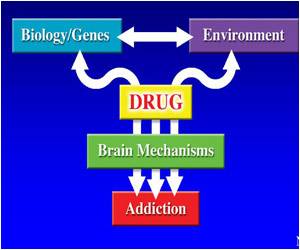
‘Creativity cannot be fully explained in terms of the activation or deactivation of a fixed network of brain regions. Researchers said that when creative acts are linked to conveying specific emotions, the nature of the emotions strongly influences which parts of the brain's creativity network are activated, and to what extent.’
Tweet it Now
Senior author Charles Limb, an avid jazz musician and physician-researcher at UC San Francisco, said, "The bottom line is that emotion matters. It isn't just a binary situation in which your brain works one way when you're being creative and another way when you're not. Instead, there are greater and lesser degrees of creative states, and different versions of these states. And emotion plays a crucially important role in these differences." Most of the new research, which appears in the January 4, 2016 issue of Scientific Reports, was conducted in Limb's laboratory at the Johns Hopkins School of Medicine before his move to UCSF in 2015. In his surgical practice, Limb, now the Francis A. Sooy Professor of Otolaryngology at UCSF, specializes in cochlear implantation to restore hearing.
Previous research by Limb and others using functional magnetic resonance imaging (fMRI) to study musical improvisation, freestyle rapping, and rendering caricatures - creative acts that unfold quickly in real time and are therefore more amenable to laboratory studies than, say, composing a symphony or writing a novel - deactivate a brain region known as the dorsolateral prefrontal cortex (DLPFC), which is involved in planning and monitoring behavior. This DLPFC deactivation has been taken to be a neural signature of the 'flow state' artists may enter to free up creative impulses.
But in the new study, led by first author Malinda McPherson, the researchers observed that DLPFC deactivation was significantly greater when the jazz musicians, who played a small keyboard while in the fMRI scanner, improvised melodies intended to convey the emotions expressed in a 'positive' image (a photograph of a woman smiling) than when they aimed to capture the emotions in a 'negative' image (a photograph of the same woman in a mildly distressed state).
On the other hand, improvisations targeted at conveying the emotions in the negative image were associated with greater activation of the brain's reward regions, which reinforce behaviors that lead to pleasurable outcomes, and a greater connectivity of these regions to the DLPFC.
Advertisement
Limb said, "The notion that we can study complex creativity in artists and musicians from a neuroscientific perspective is an audacious one, but it's one that we're increasingly comfortable with. Not that we're going to answer all the questions, but that we have the right to ask them and to design experiments that try to shed some light on this fascinating human process."
Advertisement










